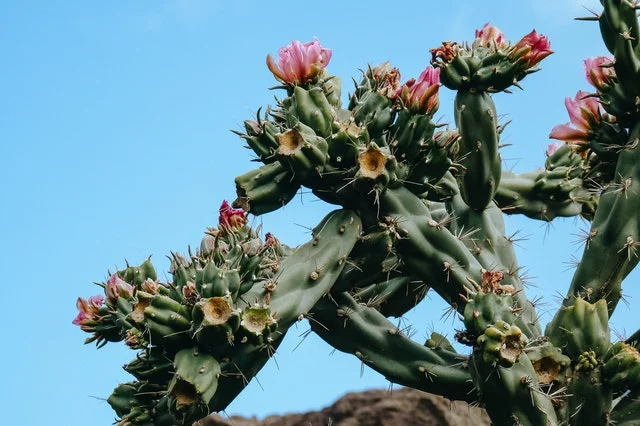Table of Contents
How Do You Take Care Of A Flowering Cactus
Cactus plants are succulents that usually require very little care. For this reason, they make suitable houseplants for many types of homes as long as their basic needs are fulfilled.
There are almost 2000 species of cacti, some of which have amazingly long lifespans lasting centuries. While these plants are lovely structures, the flowering cactus can be even more beautiful. It is often the pride of caregivers when the bloom starts to develop.
The type of cactus a person chooses may depend on the result they want. Some individuals prefer a species that blooms quickly and consistently, such as the Pincushion Cactus. It is often only a three or four-year wait.
Other people don’t mind waiting a long time if they prefer another kind of flowering cactus.
How do you take care of a flowering cactus?
To give a flowering cactus the longest life, and the best chance for blooming, there are some care requirements. These are the basics of caring for these plants. They could vary based on the exact species of flowering cactus.
- Place the flowering cactus in cacti or succulent potting mix in a well-drained pot or container. The most recommended potting soils often have pumice and perlite added to them.
- Water the plant when the soil is dry. Avoid overwatering as this could attract pests or cause disease to develop. Most issues experienced by flowering cactus plants are caused by overwatering. In many cases, they can recover.
- Place the plant in a brightly lit area where it can receive at least six hours of sunlight per day. If dark spots appear on the surface of the plant, it is receiving too much light.
- Ensure the flowering cactus is in a well-ventilated area.
- Fertilize using liquid plant food during the growing season. Fertilizer designed for cactus and succulents is advised, but standard plant food low in nitrogen also works well for the flowering cactus. Dilute the standard plant food to one-quarter of its strength. Too much fertilizer could damage the succulent.
- At the first signs of disease or pests, caregivers need to start treatment. Symptoms of issues may include a yellowing of the skin or the appearance of black spots. Treatments could include repotting into fresh soil plus the use of fungicides or insecticides.
- Repot every two or three years, or if issues with diseases and pests arise.
Should I water a flowering cactus?
A flowering cactus may only need watering once a month. In colder temperatures, this may be done less frequently. Water should only be added when the soil is dry.
Outside plants may need more water because the air tends to dry the soil faster.
Holiday flowering cactus plants need more water than other species. However, the amount of water can be reduced once the flowers start to bloom.
What kinds of cactus plants have flowers?
All cacti are flowering, but some take longer to bloom than others. Some cacti remain dormant for years before blooming. However, flowering cactus plants like Parodia and Gymnocalycium offer very colorful displays and quite easily too.
Other flowering cactus plants that are known to bloom easily include the following. It should be noted that the names ending with “cacti” are a genus, whereas those with “cactus” are a species.
- Bolivian Cacti
- Christmas Cactus
- Easter Cactus
- Hedgehog Cactus
- Pincushion Cactus
- Garnet/Dwarf Cacti
- Mammillaria Cacti
- Notocactus
How often does cactus bloom?
Even though it might take years for a flowering cactus to bloom, once it starts, it usually happens at least once a year.
More humid years may lead to additional flowering periods. Most species will bloom during the spring and summer months.
How long do cactus flowers last?
The length of time a bloom lasts for a flowering cactus depends on the species. Some flowers last as little as one day, whereas other cactus flowers might last up to six weeks.
Aside from the species of flowering cactus, other factors also determine this period. The longevity may vary based on the air temperature, type and hours of sunlight per day, and amount of watering it receives.
Do cacti die after flowering?
The only flowering cactus plants that die after blooming are monocarpic. The other types of cacti do not usually die after this period, which includes the majority of these succulents.
Do you cut flowers off cactus?
A caregiver can remove dead blooms from a flowering cactus, although sometimes this is not needed. In some cases, the dead flowers will fall from the succulent when they are ready.
If cutting is required, it should be done with sharp sterilized scissors or pruning shears. Individuals looking for seeds are recommended to cut the blooms quickly to collect these seeds once the flowers are spent.
Can you use cactus flowers for propagation?
Flower cuttings are not used for propagation, so there is no need to cut for this purpose. Propagation is typically done through stem cuttings and seeds. Some flowering cactus plants will produce offsets.
These shoots can be carefully removed and planted in potting soil where they will eventually take root.
Why do cactus flowers bloom at night?
Flowering cactus plants, like other desert plants, bloom at night because that is when they are pollinated by moths and other flying insects. Blooming at night is a method of survival as it improves the chance of reproduction.
How is the flowering cactus cared for after they bloom?
Most flowering cactus plants are cared for in the same way after they bloom, with plenty of sunlight, as well as a little water and fertilizer. Holiday flowering cactus plants may require less water than usual.
When the flowers die and fall from the plant, they can be removed from the soil’s surface.
What does it mean when a cactus flowers?
There are two ways of looking at the meaning of a cactus flower. From a botanical standpoint, it means that the flowering cactus is healthy and getting enough light and nutrients.
The other aspect is what the cactus flower symbolizes. It is said to stand for the loneliness of the desert, the strength to endure harsh conditions, and the attraction between two people.
Individuals who look for deeper meaning in nature may appreciate the flowering cactus for any of these reasons, not to mention, its natural beauty.
Photo by Atypeek Dgn from Pexels


